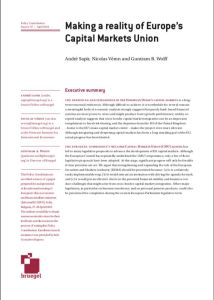Join getAbstract to access the summary!

Join getAbstract to access the summary!
André Sapir, Nicolas Véron and Guntram B. Wolff
Making a Reality of Europe’s Capital Markets Union
Bruegel, 2018
What's inside?
EU leaders place strategic importance on creating a robust capital markets architecture.
Recommendation
Financial stakeholders depend on robust capital markets in the United States; however, in the European Union, a capital markets infrastructure is far less developed. Economists André Sapir, Nicolas Véron and Guntram B. Wolff examine the development of the EU’s Capital Markets Union Agenda and its plan to strengthen the framework and operation of a unified EU capital market. getAbstract recommends this highly detailed but informative report to policy experts and financial executives interested in a deep dive into the policy direction of EU leadership.
Summary
About the Authors
André Sapir and Nicolas Véron are senior fellows at Bruegel, where Guntram B. Wolff is the director.




























Comment on this summary